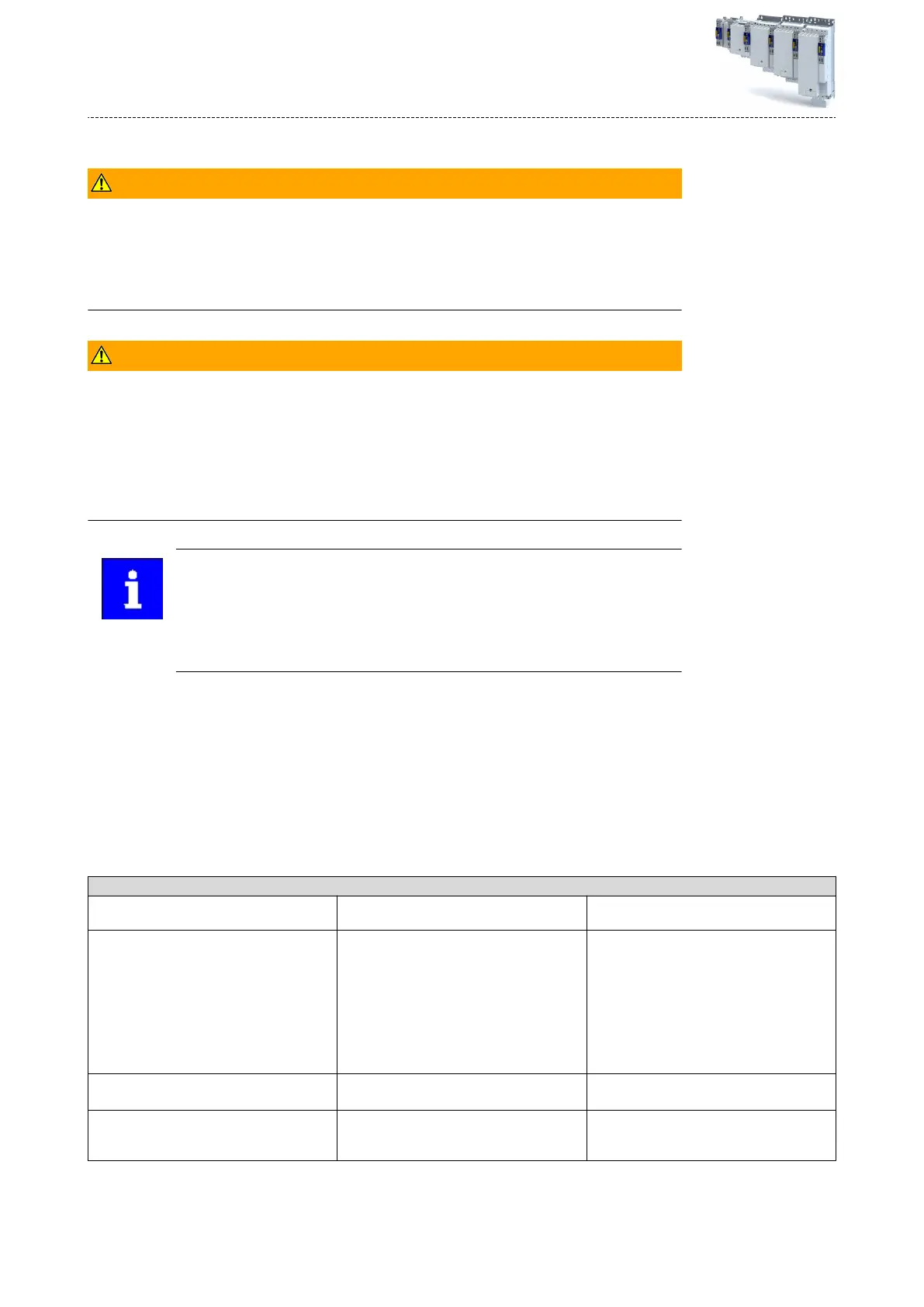13.9.1.2 Speed-dependent evaluaon of the motor current
WARNING!
Fire hazard by overheang of the self-venlated standard motor
P
ossible consequence: destrucon of system parts
▶
Protect self-venlated standard motors especially at low speeds by sucient cooling or
from impermissibly high motor currents. Carry out a speed-dependent evaluaon of the
permissible motor current.
WARNING!
Fire hazard by overheang of PM synchronous motors
P
ossible consequence: destrucon of system parts
▶
Please check for every individual case which r.m.s. value can be used to permanently oper-
ate the motor at standsll. In case of some motors, a derang I1/In < 100 % is required
when n1/nn = 0 %. This serves to prevent an overload of individual motor phases as their
power loss doubles with connuous DC current load. (It is called DC current load as the eld
frequency amounts to 0 Hz at standsll.)
When you select a Lenze motor from the catalogue and transfer its parameters
in
to the i700 servo inverter a typical characterisc is automacally set for the
selected motor. A deviang parameterisaon is only required if the motor is
operated in ambient condions which demand a general derang. Example: use
in site altudes > 1000 m. In case of motors of other manufacturers, the operat-
ing points have to be parameterised based on the data sheet informaon.
By
selecng a characterisc, the permissible motor current is evaluated depending on speed
for calculang the thermal motor ulisaon. For this purpose, up to four operang points on
the S1 characterisc of a motor can be used.
•
The S1 characterisc can be found in the technical data sheet/catalogue of the respecve
motor.
•
The representaon in the objects /characterisc is carried out as relave values with refer-
ence to rated values.
The speed-dependent evaluaon of the permissible motor current can actually be switched
o by parameterising all 8 characterisc points to "100 %".
Operang points
① Standsll n01-I01 For motors, this operang point is oen descri-
bed with the no-Io v
alues.
② Reference point n02-I02 If the value falls below the speed n02, a derat-
ing in the current is required because:
•
the motor cooling of self-venlated motors
deteriorates considerably.
•
a DC current load causes an increased power
loss in a winding.
•
For motors, this operang point is also
described with the no-Io values.
③ Rated point (n03=nN)-(I03=IN) Rated values of the motor are the reference for
all operang points of the i
2
xt monitoring.
④ Field weakening n04-I04 This operang point should be parameterised
irrespecve of the use in the current applica-
on.
Conguring the motor control
Mot
or protecon
Motor overload monitoring (i²*t)
268

